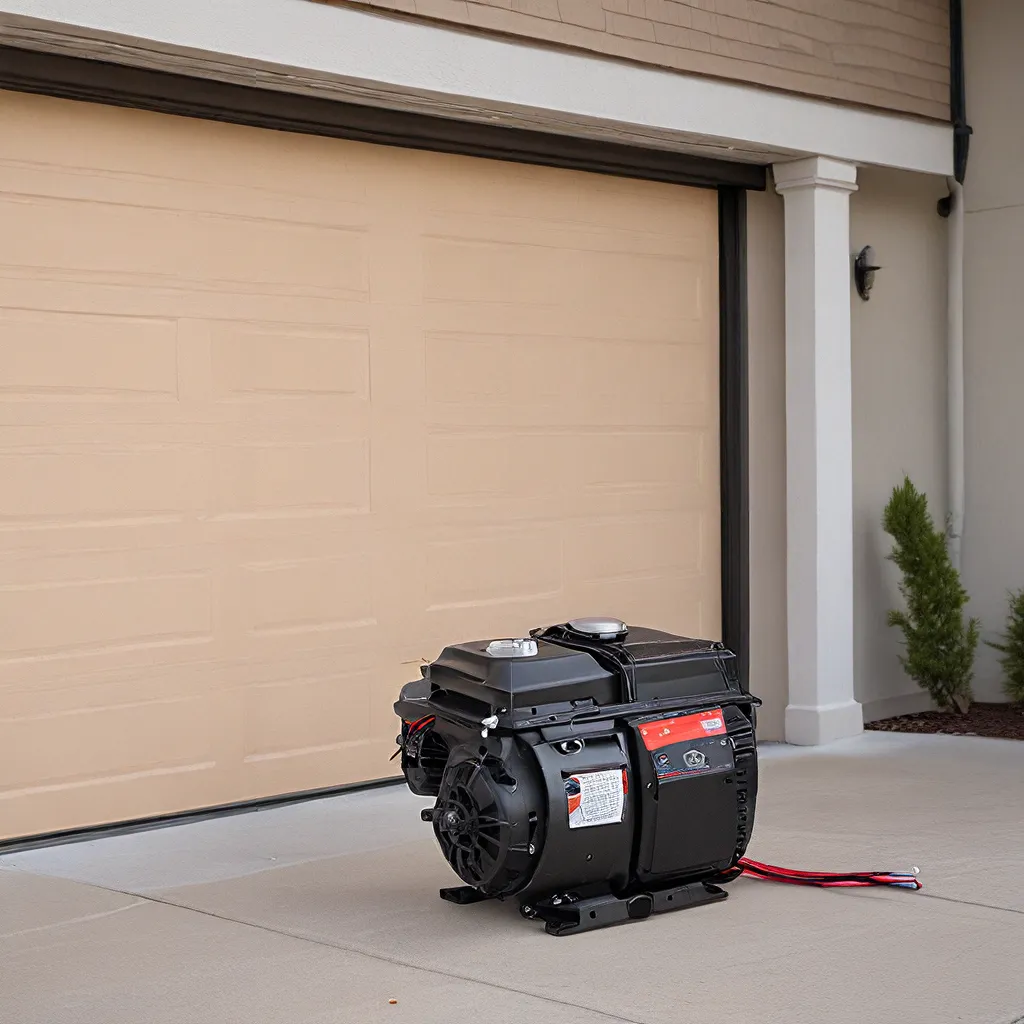
Dealing with a malfunctioning garage door can be a frustrating experience, especially when the root cause is related to power issues. Whether you’re a homeowner or a property manager, understanding how to troubleshoot and resolve common power problems in your garage door opener can save you time, money, and the hassle of a non-functioning entryway.
In this comprehensive guide, we’ll dive into the most prevalent power-related issues that can affect your garage door motor, providing you with the knowledge and step-by-step solutions to get your system back up and running smoothly.
Identifying and Fixing Common Power Problems in Garage Door Openers
The first step in troubleshooting power issues with your garage door opener is to ensure that the power source is functioning correctly. Start by checking if the opener is plugged in and that the circuit breaker or fuse hasn’t tripped. If the power source appears to be fine, inspect the power cord for any visible damage.
If your garage door opener isn’t working after a power outage, try unplugging it, waiting a few minutes, and then plugging it back in. This simple reset can often resolve the issue. However, if the problem persists, consult your user manual or consider seeking professional help to repair the garage door opener.
Fixing Wall Control Power Problems with Your Garage Door Opener
Another common power-related issue can stem from the wall control unit. If the wall control isn’t powering up, it may be due to loose or corroded connections. Carefully inspect the wiring connections and replace any damaged wires. Remember to prioritize safety when dealing with electrical components.
If the wall control is functioning but your remote controls aren’t working, check if the lockout feature is enabled. This feature, indicated by a blinking green light on the wall control, disables all remote operations. To resolve this, press and hold the Lock button for 2 seconds to turn off the lockout feature.
Troubleshooting Motor and Travel Issues with Your Garage Door Opener
Power issues can also affect the motor and travel functions of your garage door opener. If the motor is running but the door won’t open or close, it’s possible that the garage door itself is the culprit. First, ensure that the garage door lock is unlocked. If the door is still not moving, check the trolley to see if it’s disconnected, and reconnect it using the manual door release mechanism if necessary.
In some cases, the garage door may not be opening or closing due to travel issues. This can happen when the door’s movement is obstructed or the opener’s travel settings are out of sync. Refer to your user manual or seek professional assistance to properly adjust the travel limits and ensure smooth door operation.
Integrating Smart Door Technologies for Improved Control and Monitoring
As technology continues to advance, homeowners and property managers have access to an array of smart door solutions that can enhance the functionality and security of their garage doors. One such technology is the MyQ system, which allows you to control and monitor your garage door from anywhere using your smartphone.
The MyQ platform seamlessly integrates with existing garage door openers, providing a universal smartphone-controlled solution. With features such as remote opening and closing, real-time status updates, and the ability to create custom schedules, MyQ offers a convenient and secure way to manage your garage door operations.
When it comes to smart door technologies, it’s important to ensure compatibility with your current garage door opener and to follow the manufacturer’s instructions carefully during the installation and setup process. Proper integration can help you avoid power-related issues and ensure uninterrupted access to your property.
Maintaining Your Garage Door Opener for Optimal Performance
Regular maintenance is key to keeping your garage door opener in optimal working condition and preventing power-related issues. This includes:
- Inspecting the power cord: Check for any signs of wear, damage, or fraying, and replace the cord if necessary.
- Cleaning the safety sensors: Ensure that the photo-electric sensors are clean and aligned properly, as obstructed or misaligned sensors can affect the door’s ability to close.
- Lubricating moving parts: Apply a small amount of lubricant to the garage door’s moving parts, such as the chain, pulleys, and rollers, to maintain smooth operation and reduce the strain on the motor.
- Testing the auto-reverse feature: Engage the auto-reverse mechanism to ensure that the door is reversing properly when it encounters an obstruction, as this safety feature is crucial for preventing damage and injuries.
By staying proactive with maintenance, you can extend the lifespan of your garage door opener and minimize the likelihood of power-related problems.
When to Seek Professional Garage Door Repair Services
While many power-related issues can be resolved with DIY troubleshooting, there may be instances where it’s best to call in a professional garage door repair service. If you’re unsure about the cause of the problem, or if you’re not comfortable working with electrical components, it’s always better to err on the side of caution and let the experts handle the repair.
At MWD Door Service, our team of experienced technicians is well-versed in diagnosing and resolving all types of garage door problems, including power-related issues. We use the latest tools and techniques to ensure that your garage door opener is functioning properly and that your property remains secure.
Don’t let power problems disrupt your daily routine or compromise the safety of your home or business. Contact MWD Door Service today to schedule a professional garage door repair and get your system back to optimal performance.


